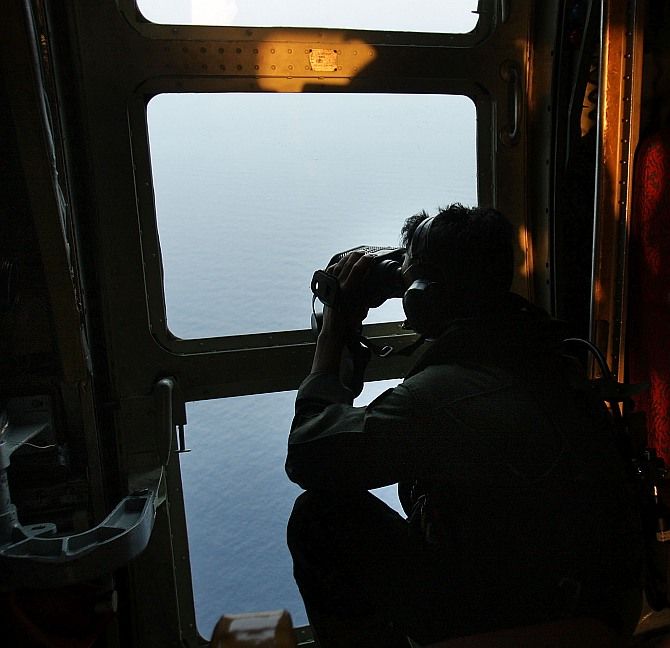 The search for flight MH370 is yet to target a "hotspot" most likely to be the crash site in the Indian Ocean as priority was given to investigate "pings" that has led to a dead end, a United Kingdom satellite firm claimed on Tuesday.
The search for flight MH370 is yet to target a "hotspot" most likely to be the crash site in the Indian Ocean as priority was given to investigate "pings" that has led to a dead end, a United Kingdom satellite firm claimed on Tuesday.
The UK satellite company Inmarsat told the BBC that the search for the missing Malaysia Airlines jet was yet to go to the area its scientists think is the plane's most likely crash site.
Inmarsat's communications with the aircraft are seen as the best clues to the whereabouts of Flight MH370. The hunt for the lost jet is currently taking a short break while ships map the Indian Ocean floor. When the search resumes, the Inmarsat "hotspot" will be a key focus along with a number of areas being fed into the investigation by other groups.
Inmarsat's scientists could tell from the timings and frequencies of the connection signals that the plane had to have come down in the southern Indian Ocean. An Australian naval vessel was sent to investigate the region west of Perth, and followed up leads as they emerged.
The Ocean Shield ship never got to the Inmarsat hotspot because it picked up sonar detections some distance away that it thought were coming from the jet's submerged flight recorders.
The priority was given to investigate these "pings", and two months were spent searching 850 sq km of sea bed. Ultimately, it turned out to be a dead end. "It was by no means an unrealistic location but it was further to the north east than our area of highest probability," Chris Ashton at Inmarsat was quoted as saying.
The Beijing-bound Boeing 777-200 -- carrying 239 people, including five Indians, an Indo-Canadian and 154 Chinese nationals -- mysteriously vanished on March 8 en route to Beijing from Kuala Lumpur.
It was the brief, hourly electronic connections between the jet and one of Inmarsat's spacecraft that are currently driving the search. Inmarsat's experts used their data to plot a series of arcs across the Indian Ocean where its systems made contact with the jet.
By modeling a flight with a constant speed and a constant heading consistent with the plane being flown by autopilot -- the team found one flight path that lined up with all its data.
"We can identify a path that matches exactly with all those frequency measurements and with the timing measurements and lands on the final arc at a particular location, which then gives us a sort of a hotspot area on the final arc where we believe the most likely area is," Ashton said.










